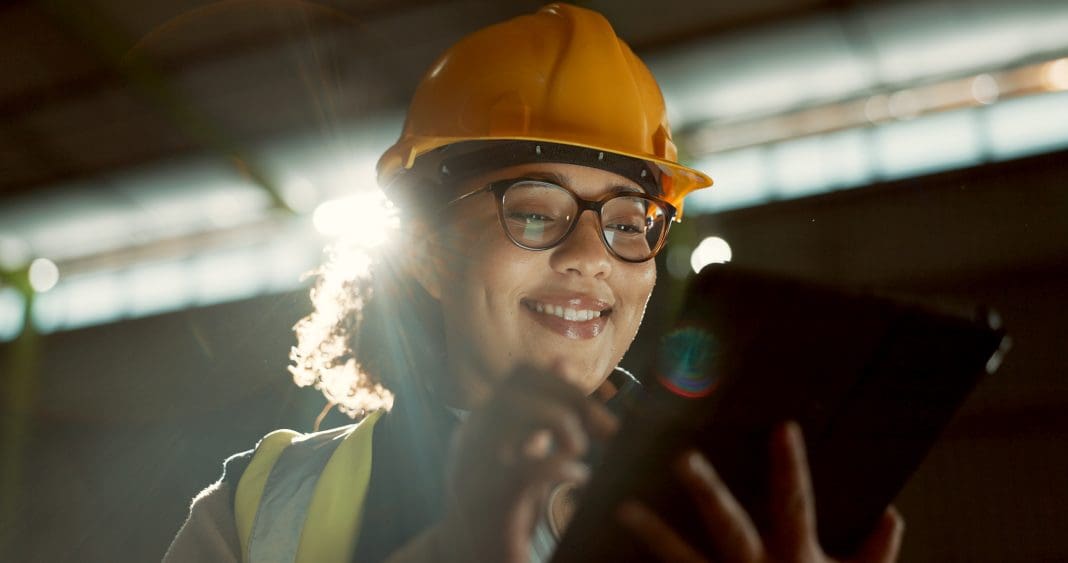As technology advances, digital twins offer promising benefits for smaller construction businesses, helping them stay competitive. Richard Clement, Smart Construction, shares his thoughts on the use and benefits of digital twins for smaller enterprises
After years of following traditional practices, the construction industry is now adopting digital solutions to transform its operations. These solutions include the likes of digital twins to visualise the progress of the jobsite.
Digital twins in the construction industry
The idea of digital twins has been around for more than two decades, but businesses are just starting to realise their enormous potential, particularly for small and medium-sized enterprises in the construction sector.
A digital twin is a detailed virtual model of a physical object. It is used for integration, testing, and maintenance, enabling users to apply hypothetical simulations to examine potential outcomes before implementing them in the real world.
They act as a bridge between the physical and digital, enabling stakeholders to interact with and gain insights into the project in a virtual environment.
Clement explains: “Digital twins have become a critical element in various industries as a method of testing before making physical changes to a project. They are widely adopted in several sectors, including aerospace, automotive, and, of course, construction. Other industries are also recognising the success and effectiveness of digital twins and exploring ways to incorporate them into their day-to-day operations.’’
How are digital twins applied in construction?
“Digital twins offer a visual representation of how a structure or asset will appear after it is constructed. Site managers and construction workers can utilise their digital twins to design, plan, and monitor their equipment and sites.
This is particularly beneficial for site managers who are responsible for overseeing multiple sites as they can monitor these virtually,” Clement goes on.
Digital twins offer the benefits of real-time collaboration between various stakeholders, such as architects, engineers, and contractors. They enhance the exchange of ideas and help identify potential issues before construction begins.
Moreover, they can simulate hypothetical scenarios and test the consequences of different design choices, enabling stakeholders to make informed decisions. This, in turn, ensures that projects stay on track, remain profitable, and meet clients’ expectations and deadlines.
“Our own Smart Construction Dashboard provides the environment to visualise and analyse a digital twin, ensuring the job site is on track. This includes a 3D visualisation of the job site which can be updated in real time, offering insight to inspire effective decision-making and productivity whilst removing guesswork,” says Clement.
How digital twins have helped real-life SMEs
Over the next three years, 97 percent of UK construction companies plan on investing in digitisation.
Investing in a digital twin has multiple benefits, from spotting issues before construction begins to updating stakeholders virtually, saving time required onsite.
Chris Horn, technology manager at HB Golf, offers some insight on how Smart Construction’s Dashboard has allowed him to create a digital twin for his site, benefitting his team on one of his projects in the Czech Republic: “Creating a digital twin using Dashboard has allowed me to see a virtual replica of the sites I manage.
“This has saved me a lot of time as I can manage sites virtually and can identify issues before they happen. Reworks can be very costly in this industry and while it’s previously been a cost we’ve had to bear, but now we can harness the data, it gives us the power to make changes before something goes wrong.”
Clement adds: “We know that time is at a premium for firms in the field. Saving site managers time to be able to do tasks that require more attention brings ultimate rewards to businesses in the form of profitability and productivity. “
How are they shaping the future of construction?
Clement says: ‘’Digital twins have already made a significant impact on the construction industry in various ways. They have improved project management, virtual collaboration, and saved time and costs while reducing risks and increasing overall efficiency. Despite their very recent surge in popularity, the results are already evident, and they are proving to be instrumental tools for the industry’s future.
“As the construction industry embraces digital transformation, digital twins are expected to become more powerful as companies look to digitalise their fleets and processes.
“We face an uncertain future characterised by a rise in insolvencies and a significant decrease in spending. Digital twins and other smart technologies will be crucial in ensuring processes become more efficient and accurate to help businesses continue to profit and save time.
“Given the push for new government initiatives in the UK and Europe, the ageing workforce, and the industry’s move towards tech solutions to alleviate the challenges brought by reduced workforces, smart technology is undoubtedly the future of construction.’’
What’s next?
As the construction industry strives towards becoming more digitised, digital twins can help aid this vision.
Embracing the goal of a digital future, construction companies are now looking to invest in technology that can improve their efficiency and profitability, by reducing spend, improving accuracy, and even ameliorating fuel wastage.
Clement summarises: “The future of digital twins looks bright as they are expected to become even more sophisticated and powerful in the coming years, becoming a standard in the industry. With the integration of AI, experts predict that digital twins will become even more self-sufficient.
“Currently, digital twins are an emerging technology that will transform various industries. The potential uses and benefits of digital twins are vast, making them an exciting and promising innovation.”














